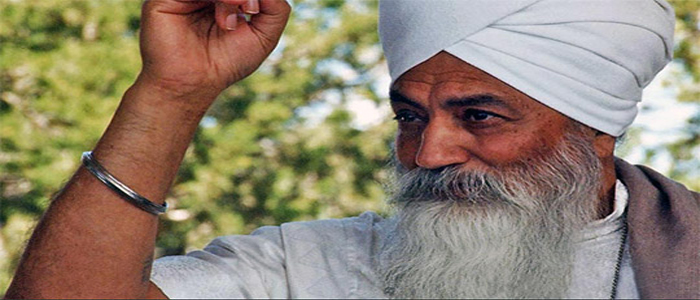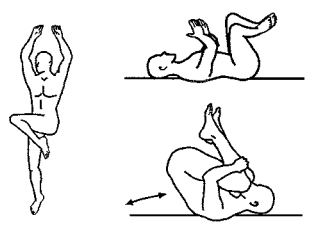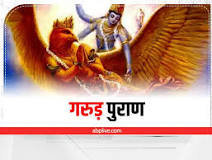Total harmonious relaxation cures the body. To achieve this there must be a coordination between the three facets of ourselves: body, mind, and soul.
This chapter includes … Relaxation During Yoga Class Importance of Relaxation Ultimate Relaxation Postures for Relaxation Leading a Class into Deep Relaxation Creating the Environment for Deep Relaxation Coming Out of Deep Relaxation One Teacher’s Guided Relaxation COPYRIGHT YOGI BHAJAN 2003 Total harmonious relaxation cures the body. To achieve this there must be a coordination between the three facets of ourselves: body, mind, and soul. 116 1 16 1 16 1 17 1 17 118 1 18 1 18
Relaxation During Yoga Class
The ability to relax is essential for physical and mental wellbeing. Relaxation is difficult for most people, who tend to turn on the TV, or turn to alcohol or drugs to relax. Kundalini Yoga gives people the tools to be able to truly relax. Relaxation is an important part of the rhythm of exercise and change in Kundalini Yoga. The physiological and neural state of a student is elevated after completing a Kundalini Yoga kriya. It is the physiology of awakening and awareness. During this state, relaxation serves several functions: Rejuvenating, especially the parasympathetic nervous system. Distributing of prana stimulated by the exercises. Releasing rigid patterns in the muscles and blood flow. Circulating glandular changes. Centering one’s emotional energies Learning how to handle stress and letting go.
“Memorizing” the relaxation sensation. I ntegrating a new pattern after an old one is broken. Creating a rhythm or pulse of energy. SIMPLE RELAXATION With beginners especially, simple relaxation is added between exercises. Often the pattern taught by Yogi Bhajan was 1 -3 minutes of relaxation between exercises or after a short sequence (for instance, three exercises). The entire kriya and meditation would then be followed by a 1 0- 15 minute deep relaxation, or “yogic sleep” – called “yoga nidra.” In more advanced kriyas the use of relaxation varies greatly. Sometimes there will be no relaxation between exercises, just 1 0- 30 second pauses. Other times will call for one or two ISminute yogic sleeps.
Importance of Relaxation
Ultimate Relaxation
Relaxation is difficult for most people because of a subliminal level of emotional conflict or turmoil. Even as we go about our tasks, there is an inner emotive dialogue that generates patterns of anxiety, anger, hopelessness, or other self-defeating emotions. That is called 11 com motional living. 11 It drains the reserve energy of the nervous system and creates defenses and armoring against the discomfort. Relaxation that releases such patterns and that opens us to a new inner organization of our resources is essential. To do it effectively we need to change the distribution of prana-the vital life-force-in the body and activate systems of nerves that allow the self to re-organize patterns of being and acting. Kundalini Yoga and the transformational processes of Humanology are an effective and versatile way to create this level of relaxation. They are technologies of the soul that can be done by an individual for 40 days to completely alter the quality of the daily encounter of life. We rarely meet life directly. We do it through the mask of the personae, through the maps of our mind, through the unconscious patterns of habit and attention, and through the projections of our emotions. By penetrating to the core of the pattern of commotion, and relaxing into our elementary or core self, life becomes new, fresh, revitalized. Lightness and hope come into every step.
Another dimension of relaxation comes from the fact that we are a reality, a soul, a creative expressive essence who can initiate things within this world. We have a dimension of ourselves which is free, spontaneous, and connected to all things. But the process of manifestation into the gross realms proceeds in a flow: from essence to thought forms, to feelings, to patterns of feelings (persona), to desires and projections, and to actions and habits. We easily forget the essence, the freedom, the choice to begin actions by recognizing the intention and purpose of the heart. I nstead, we become entangled in the web of attachments and actions we initiated in other times and situations. We get out of contact with the guidance and choices of our soul as we cross the ups and downs of our own wake from past choices. To relax in the midst of a hurricane, we must find the center, the inner eye (“!”). To direct the mind in this way, we gather energy, ask ourselves certain questions and statements that guide the mind in a natural sequence through its three primary functional aspects: Negative Mind, Positive Mind, and Neutral Mind. Then we dwell in the presence of the Self and let the miracles happen. With this resource we can be relaxed amidst the greatest challenges, and we can remember our real Selves in the most unreal situations!
Postures for Relaxation
This is a good posture for relaxation between yoga exercises in a set, especially after a backward bending exercise. In Rock Pose, rest your forehead on the ground. Arms are alongside the body, palms facing up.
Guru Pranam This is a variation of Baby Pose. The arms are stretched out on the floor in front of the head, palms together.
Easy Pose Easy Pose is appropriate as a brief relaxation during a set. Lightly concentrate at the brow, with a relaxed breath, inhaling Sat, exhaling Naam. This is not a time for Long Deep Breathing, or mechanical breathing.
Knees Pulled up Lying on the back with the knees pulled up and the arms wrapped around the knees is a good way to relax after a forward bending exercise.
Corpse Pose (Shavaasana) Corpse pose, or shauaasana. is the best position for deep relaxation. Lie on the back, arms at the sides, palms facing up, ankles uncrossed.
Leading a Class into Deep Relaxation RELAXATION POSWRES Deep relaxation is not just the absence of movement. It brings profound relaxation to the physical body, allowing us to enjoy and consciously integrate the mind-body changes which have been brought about during the practice of a kriya. We may sense the extension of the self through the magnetic field and the aura.
Most people do not know how to relax. Leading a class into deep relaxation is an opportunity for you to teach the students how to relax. You will develop your own style and language for guiding the class into the state of deep relaxation. Following is an example of how it might sound: You may want to cover your body with a blanket or shawl to keep warm. Lie down on your back with your arms at your sides. Rest your arms with the palms facing up. Feet are uncrossed. Close your eyes. Relax the breath. Let the belly naturally rise and fall. Let everything else go. You’ve done all you could and all you should. Prepare to heal, rejuvenate, relax, let go and let God.
Consciously instruct your body and mind to let go. Go through your body systematically and give permission for each part, limb, and cell to relax. Instruct each part of your body to lovingly release tension as you mentally say ” relax,” or “release,” or “Sat Naam.” (The Teacher will bring attention to each body part: “Relax your feet… relax your legs … etc.” The Teacher may bring the students’ attention to guiding the contraction of each muscle, and releasing it.)
Creating the Environment for Deep Relaxation
Create a “safe” environment for the students to relax into by assuring, as much as possible, that there will be no interruptions or unnecessary noise. If the class is being held in an environment with unavoidable noise. instruct the class to integrate that noise into their aura. Remind them that they do not have to react or resist the noise. Kundalini Yoga music. Choose uplifting, calm mantra music. Be aware of the particular frequency and rhythm of the mantra. Silence. If the class is being held in a calm, quiet environment. a silent relaxation can be very beneficial. Gong. The rhythmic overtones of the gong clear the aura. Yogi Bhajan says: “The mind has no defense against the gong.” Proper training is necessary to correctly play a gong. Visualization. In some instances the Teacher may lead the students in a guided visualization. The teacher never lies down and relaxes with the students.
Coming Out of Deep Relaxation
Gently invite the class back to their body awareness. Breathe in and out deeply. Move your fingers and your toes. rotate the wrists and ankles in both directions Stretch the spine. arms overhead. and do a few Cat Sretches to each side. Rub the hands and the feet together. Roll back and forth a few times on the back
 पौराणिक कथाओं, प्रेरक क्षण, मंदिरों, धर्मों, फिल्मों, हस्तियों के बारे में दिलचस्प जानकारी, हजारों गाने, भजन, आरती के बोल हैं Your wish may come true today…
पौराणिक कथाओं, प्रेरक क्षण, मंदिरों, धर्मों, फिल्मों, हस्तियों के बारे में दिलचस्प जानकारी, हजारों गाने, भजन, आरती के बोल हैं Your wish may come true today…






























